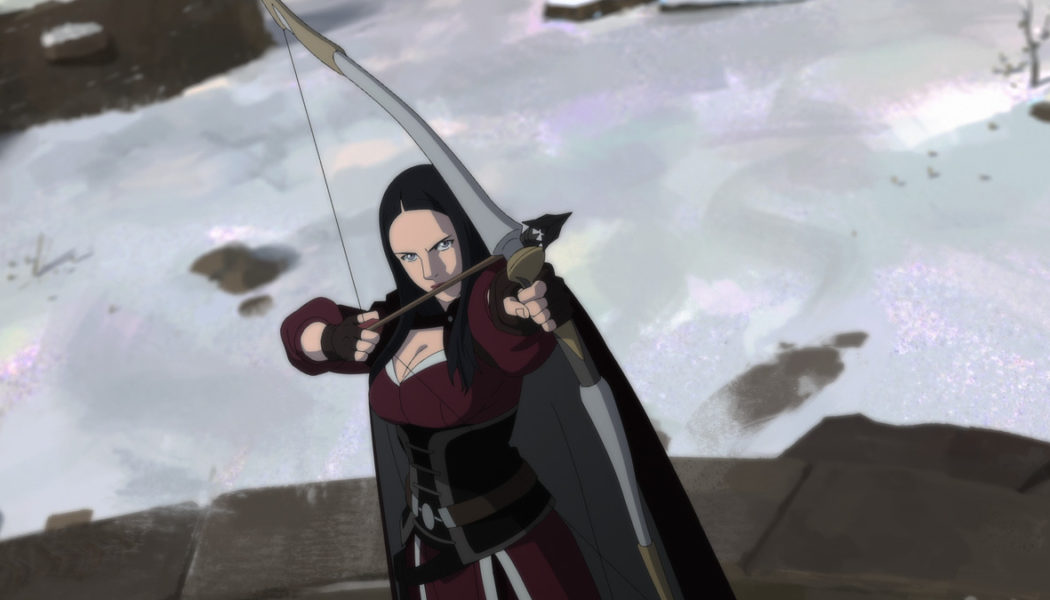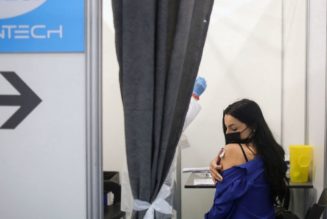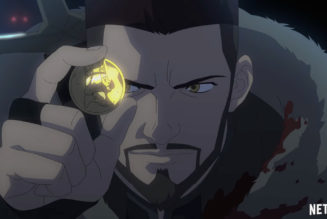Perhaps the most emblematic image of Netflix’s take on The Witcher is Henry Cavill as Geralt, giant shoulders sunken, muttering a raspy “fuck” as he realizes the depths of the problem in front of him. Geralt’s gruffness is a big part of the appeal of The Witcher, as his down-to-earth nature stands in contrast to many other fantasy stories full of royalty and long-prophesied saviors. He’s not out to be a hero; he’s just here to do a job. Saving the world just seems to happen whether he wants to be involved or not.
When it came time to create The Witcher: Nightmare of the Wolf, a prequel that stars Geralt’s mentor Vesemir, producer and screenplay writer Beau DeMayo knew he wanted a very different kind of character. Across video games, books, and a live-action show, we’ve seen plenty of the Witcher universe from Geralt’s perspective. It was time for something new — and a lot less serious. “Geralt grunts at a problem,” DeMayo tells The Verge. “Vesemir winks.”
Nightmare of the Wolf is a feature-length anime that debuts on Netflix on August 23rd. Animation was handled by Studio Mir — which previously worked on shows like The Legend of Korra, The Boondocks, and Dota: Dragon’s Blood — while DeMayo penned the story. He says he initially came up with the treatment while working on season 1 of the live-action Netflix show (DeMayo wrote the third episode), and then crafted Nightmare of the Wolf’s story in the lead-up to season 2. “In many ways it was like getting to write the same show twice in two different formats,” he says.
[embedded content]
The setting and character of the movie were interesting, he says, because The Witcher is “at its core about families and how we pass along what we learn to future generations.” As Geralt’s mentor and father figure, Vesemir was the ideal protagonist. It allowed the team to explore a new time period, before the events of the show, but also have an entirely different kind of lead. Vesemir and Geralt are both witchers, mutated mercenaries who kill monsters in exchange for gold, but their personalities are completely opposite.
“I was thinking about my own relationship to my parents and how so much of my identity is formed in opposition to what my parents are,” DeMayo explains. “And so if Geralt is the grumpiest person alive, it made sense to me that Vesemir would be an extrovert and this kind of charismatic character. Where it became interesting for me was taking the world we knew through Geralt’s point of view, which is a hard world with a hard character, and then we put this life-loving, pleasure-seeking character in that same world, and see how he interacts with it.”
One of the big changes for DeMayo was shifting to longer-form narrative. Across mediums The Witcher is typically built on episodic storytelling, whether that’s a collection of short stories, a game based around lots of quests, or a live-action show. It fits the character well, as Geralt is essentially a traveling sword-for-hire, venturing to new towns to fight monsters and reluctantly solve problems. It’s often structured like a fantasy detective story. That didn’t work for a full-length film.
“It felt like the longest sidequest in The Witcher video game,” DeMayo says of the process. “Episodically, it’s a little bit easier, a little more contained to tell those stories. The [points of view] episodically, you usually have one or two characters; here it’s a bit more of an ensemble. I think that’s probably why we have a really big quest section. That’s the thing that really came into the longer format, it allowed us to lean into the traditional dark fantasy, or just fantasy, idea of the epic quest. The ‘leaving the Shire’ kind of moment.”
The shift to animation also had its benefits. As well as Cavill was able to inhabit Geralt, he is still a human, saddled by petty problems like “gravity.” This made creating action scenes a bit more fun in the anime. “You’re not constrained by set hours, you’re not constrained by insurance policies, you don’t have to worry about killing an actor,” says DeMayo. Kwang Il Han, director at Studio Mir, points out a much more practical benefit. “The actors had difficulty carrying multiple swords at the same time [in the live-action show], because they were too heavy, so they were only carrying one sword at a time,” he says. “In the anime we don’t have those restrictions.”
:no_upscale()/cdn.vox-cdn.com/uploads/chorus_asset/file/22751348/Tetra_Character.png)
For DeMayo, a longtime fan of the franchise, Nightmare of the Wolf was also a chance to get really nerdy and answer some lingering questions about the witchers and their place in the world. In a way, the movie serves a dual purpose. It’s meant to lure in new fans who might use the anime as a starting point, but also satiate longtime Witcher buffs with some interesting new tidbits of lore.
“What [Witcher writer Andrzej Sapkowski] did very well is he hinted at things in the backstory, that made you go ‘Ooh, what’s that all about?’ If you’re a really diehard person you’ll probably go on wikis and Reddit and really fall down the rabbit hole to figure out those things,” he says. “And in some cases there are no answers for those things. I do think the prequel gives you some answers to things that we’ve all as Witcher fans wondered about for a very long time.”
Perhaps the most shocking thing fans will notice about Vesemir is that the grizzled old man has turned into a young hottie. “It just happened,” DeMayo says. “I did put dashing in the script, I think. Because in my mind he was a Witcher version of Zorro, and Diego is not a bad-looking dude. So I think it probably was my fault.”
But that also means that — as anyone who watched the latest trailer already knows — young Vesemir seems right at home in yet another Witcher bathtub scene. Given how prevalent those have become since the opening sequence of The Witcher 3: Wild Hunt, I had to ask: was it now a prerequisite for all Witcher stories?
“No,” says DeMayo. “I just wanted one.”









